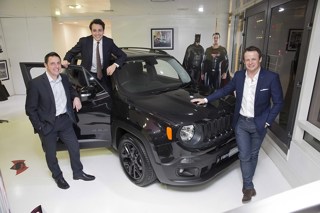The £5.75m acquisition of 129 Halfords outlets gives the AA more than simply a dominant position in the aftersales market. The Centrica-owned business has a strong platform from which to become a “motoring solutions provider”, an ambition it shares with Ford motor company.
The AA is a high profile organisation, with extremely strong brand power, that has positioned itself as a friend and champion of the motorist, as well as the 'fourth emergency service'. Retailers will be watching to see if it can successfully juggle the dual role of dealer and watchdog.
The company already has a huge customer database to exploit. It is the largest insurance broker in the UK with 1.7m customers and a credit arm that lends £500m a year to 600,000 customers. Recovery and breakdown takes membership to 11.6m.
The AA will also be able to target Centrica's British Gas customers and its Goldfish credit card operation. The two companies have an estimated combined customer database of more than 20m.
The AA has been developing steadily the infrastructure necessary to become a total motoring service provider. The Halfords outlets will augment the existing maintenance operation and complement the finance, insurance, recovery and inspection activities. The addition of vehicle sales is the final piece of the jigsaw.
Halfords has experience of new car retailing through its six-year relationship with Daewoo. The agreement, which involves 41 outlets, is likely to end as Daewoo begins appointing its own franchised network.
The AA, with its physical and virtual (www.theaa.com) routes to market, can run an operation that is flexible enough to take advantage no matter how the industry develops post Block Exemption review.
It can offer any of its products and services as standalone packages or it can combine them to provide a complete personal mobility package to rival Ford chief executive Jac Nasser's cradle to grave motoring vision. It is even well placed to handle used cars, with in-house resources to re-condition, inspect, finance and guarantee cars. Coupled with recovery and maintenance it could develop a used vehicle proposition to dominate the sector.
As many lower and medium class cars are increasingly viewed as commodities rather than objects of aspiration, the AA's timing is just about right. The image of integrity that the AA has spent the best part of a hundred years cultivating will help to ensure its success.
But in spite of all its apparent advantages, the strategy is not without considerable risk. It will be difficult to represent motorists' interests and defend their rights while becoming a dominant car retailer.
Unless the transition is handled carefully the core image of a 'motorists' club' could be damaged, and the marketing advantage derived from it would be eroded quickly.
Customers who buy from the AA will be demanding and rather unforgiving. They will insist upon the highest standards and expect total satisfaction, even if that is unreasonable. Failure to deliver to these standards will seriously dent the reputation of the organisation.
The potential rewards, however, far outweigh the risk and dictate that the challenge should be undertaken. The income from supplying all the motoring needs of its members are infinitely greater than those that can be achieved by representing their interests.
It is therefore inevitable that the AA will change as its guardian role diminishes. It is the way in which this change is handled that will determine success or failure. Alistair Cheyne, AA deputy managing director, said: “By developing the business in line with our expertise in roadside breakdown assistance and car repair we aim to offer a flexible and competitive service for all our members and customers.”

















Login to comment
Comments
No comments have been made yet.